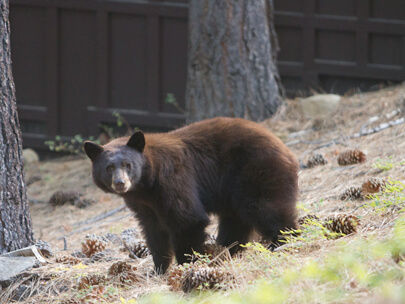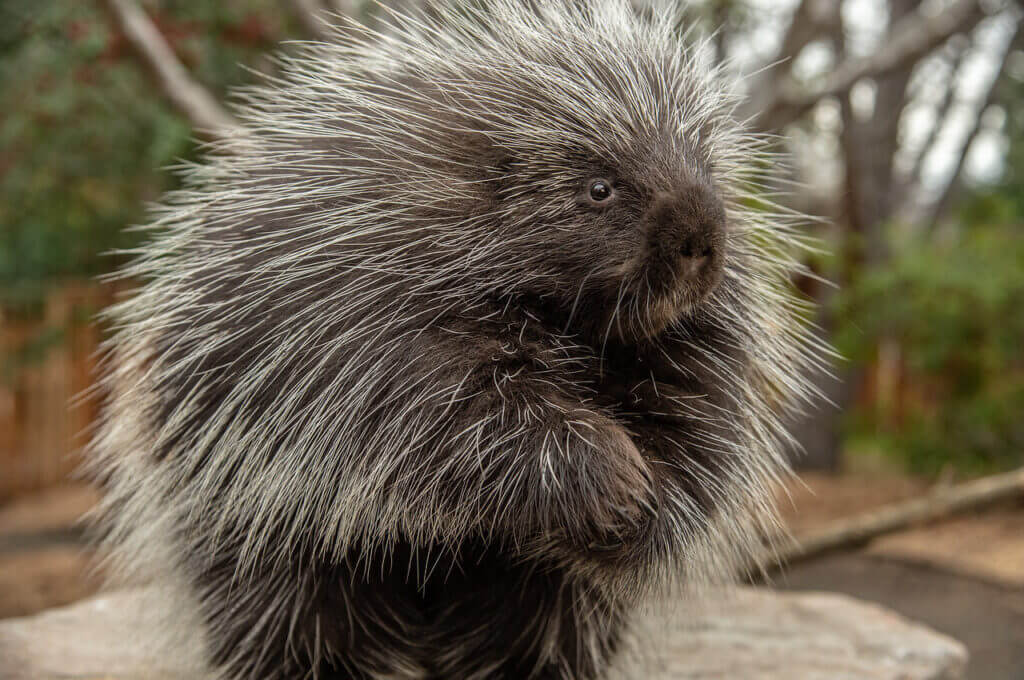Mammals of the Lake Tahoe Basin
By: Lake Tahoe Staff
By: Lake Tahoe Staff
The Lake Tahoe Basin Management Unit of the US Forest Service shares a great introduction to some of our neighbors. Please be sure to keep your dog on a leash, so you don’t disturb these Lake Tahoe residents.
One of several species of tree squirrels found in the Basin, the Chickaree has a dark brown back and a bushy dark tail with silvery hair tips. This talkative squirrel is often seen scampering up and down trees searching for choice pine cones.
Often confused with the chipmunk, the Golden-mantled Ground Squirrel has a broad white stripe-bordered back, but is larger than any chipmunk. Also the stripes do not extend up to the cheeks and face as they do on the chipmunk. Its diet is variable, including nuts, seeds, grasses, fruits and carrion. The golden mantle species is the most common and often tamest of the Sierra ground squirrels. They gather in campgrounds and lunch spots, as do chipmunks.

The largest of the Sierra carnivores, the Black Bear is found in and around the Lake Tahoe Basin. There are an estimated 25,000 to 35,000 Black Bears in California. Black Bears range in color from blond to black, with cinnamon brown being the most common color. For more information about Black Bears in the Lake Tahoe Basin visit the USFS web page: Guidelines for Living In and Visiting Bear Habitat.
If any animal can be said to typify the wild character of the west, it certainly would be the Coyote. The Coyote is a very curious animal and often lives close to humans. They usually hunt at night for small rodents. Coyotes are often seen near highways in the Tahoe Basin.
Most people are familiar with the Raccoon. The black mask over the eyes (combined with its habit of getting into ice chests) has given it the reputation of being a camp robber. Raccoons are nocturnal and feed on anything from fruit to bird eggs. It also has a peculiar habit of dunking its food in water before eating.

The Porcupine is the largest member of the rodent family. When alarmed it turns away, erects the quills, humps the body, and swings its stout tail. If any quills touch an inquiring dog, wildcat, or person, the barbed tips lodge in the enemy’s skin. The Porcupine is active mainly at night, when it feeds on the succulent inner bark of conifers.
For more mammals of the Lake Tahoe basin, visit the USFS Tahoe Basin Management Unit web page.
Lodging in Lake Tahoe